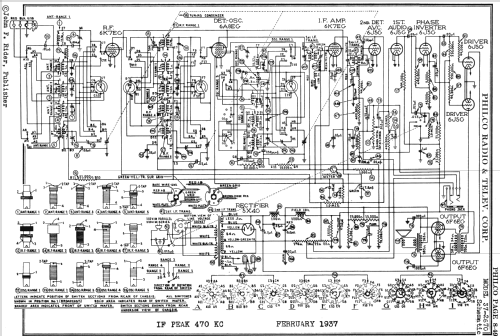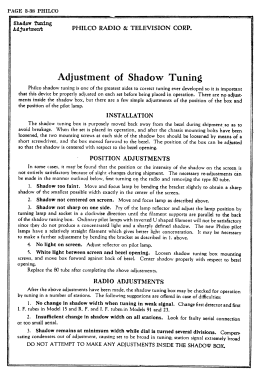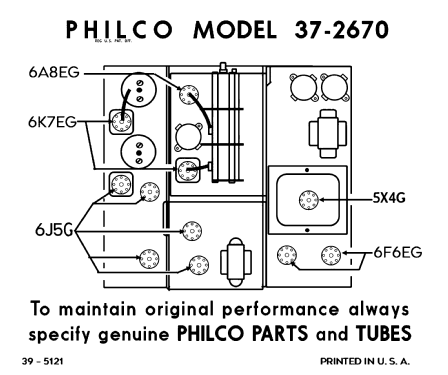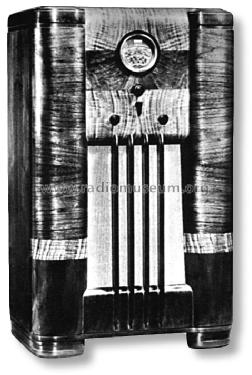37-2670X Late
Philco, Philadelphia Stg. Batt. Co.; USA
- Produttore / Marca
- Philco, Philadelphia Stg. Batt. Co.; USA
- Anno
- 1937
- Categoria
- Radio (o sintonizzatore del dopoguerra WW2)
- Radiomuseum.org ID
- 148452
Clicca sulla miniatura dello schema per richiederlo come documento gratuito.
- Numero di tubi
- 11
- Principio generale
- Supereterodina con stadio RF; ZF/IF 470 kHz
- Gamme d'onda
- Onde medie (OM), lunghe (OL) e più di 2 gamme di onde corte (>2 x OC).
- Tensioni di funzionamento
- Alimentazione a corrente alternata (CA) / 110; 220 Volt
- Altoparlante
- AP elettrodinamico (bobina mobile e bobina di eccitazione/di campo)
- Potenza d'uscita
- 10 W (qualità ignota)
- Materiali
- Mobile in legno
- Radiomuseum.org
- Modello: 37-2670X [Late] - Philco, Philadelphia Stg. Batt
- Forma
- Console di qualsiasi tipo
- Annotazioni
- The Philco model 37-2670 series is the export version of the 37-670 series, with different band coverage and power supply options. The 37-2670 chassis, like the 37-670 chassis, is an 11-tube 5-band chassis with shadow meter (tuning aid). Band coverage is 150-350 kHz (LW), 530-1600 kHz (BC), 1.6-4.8 MHz, 4.6-11.5 MHz, and 11.5-22 MHz. Power supply voltage is selected between 110 and 220 VAC (50-60 Hz) through the use of a plug which is inserted into a socket in two different orientations. There were also versions for just 115 VAC, with either 50-60 Hz or 25-40 Hz (using different power transformers, depending on line frequency). The schematic specifies the use of -E suffix tubes, which are ruggedized versions of standard tubes.
There are three specific models in the series with different cabinet styles. Model 37-2670B is a tombstone. The early version of 37-2670X is a console with a nonrecessed control panel. The late version of 37-2670X has a recessed control panel (among many other cabinet design changes).
The 37-2670 series design continued into the 1937-38 model year in the model 38-2670 series.
- Prezzo nel primo anno
- 140.00 $
- Fonte dei dati
- Philco Radio 1928-1942
- Riferimenti schemi
- Rider's Perpetual, Volume 8 = 1937 and before
- Autore
- Modello inviato da Thomas Albrecht. Utilizzare "Proponi modifica" per inviare ulteriori dati.
- Altri modelli
-
In questo link sono elencati 4089 modelli, di cui 2223 con immagini e 3736 con schemi.
Elenco delle radio e altri apparecchi della Philco, Philadelphia Stg. Batt. Co.; USA



